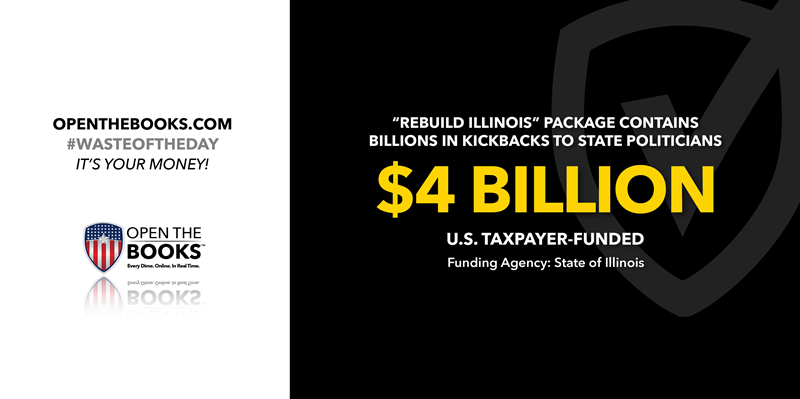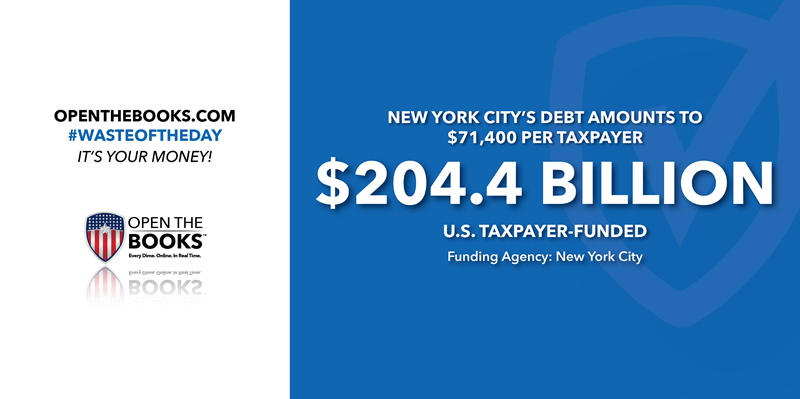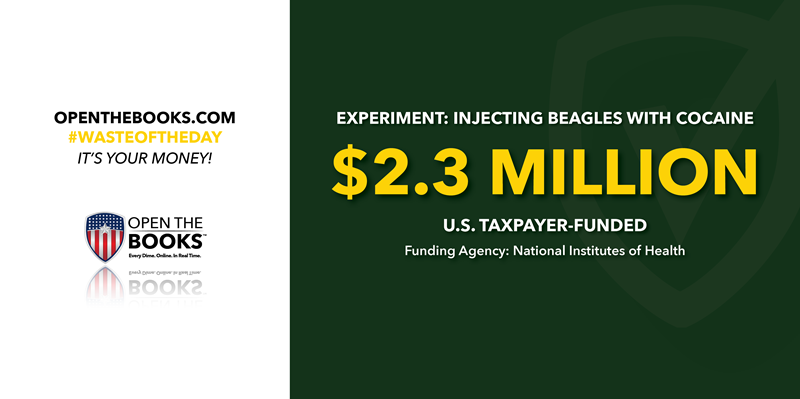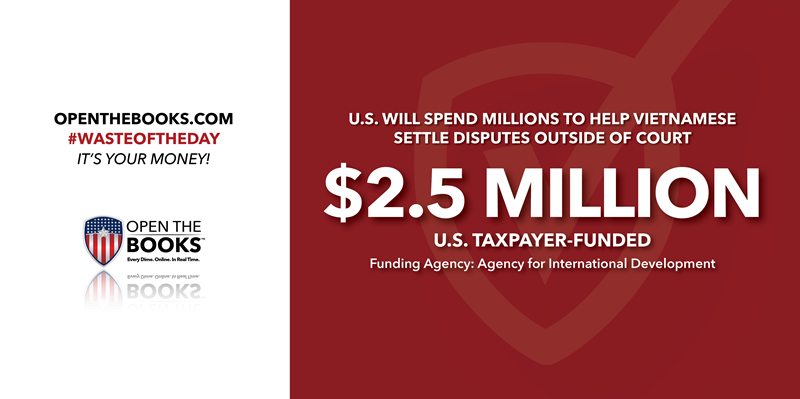
“Rebuild Illinois” Package Contains $4 Billion in Kickbacks to State Politicians
February 21, 2022

Even though the powerful former Illinois Speaker of the House Mike Madigan resigned after federal investigations, the culture of cronyism and corruption persists in Illinois. A new investigation by the nonpartisan Better Government Association found the $45 billion “Rebuild Illinois” capital plan in 2019 contained over $4 billion in pet projects that favored the states most powerful politicians.
The BGA reports that “$144 million went to just four projects backed by Madigan...Each of those projects benefitted those to whom the former speaker has personal, professional or political ties.” They found $98 million allocated to dampen train brakes outside of hotel properties owned by clients of Madigan. Interestingly enough, they were Hyatt Hotels, a chain owned by Illinois Gov. JB Pritzker’s family.
Additionally, $31 million went to the Academy for Global Citizenship, a charter school near his district that only requested $1.5 million. $9 million went to a Chicago public high school that never requested money, and $6 million for an airport control tower that one of Madigan’s political allies wanted.
The reason so much waste was able to make its way into the package was due to a policy that only Illinois politicians could tolerate. The concept of earmarking, or allocating funds for specific projects for your district, was banned by the U.S. Congress in 2011. Recently, it was reinstituted.
However, in Illinois, there is no requirement to report earmarks, so the $4 billion of “Leadership Additions” and “Governor’s Office Additions” are difficult to track.
With the lack of transparency in the Illinois legislative process, who knows how many more billions went to self-serving politicians instead of their constituents?
New York City’s Debt Amounts to $71,400 Per Taxpayer
February 22, 2022

New York City is in trouble. A new report by Truth In Accounting, a nonpartisan nonprofit that specializes in government transparency, shows that New York City has $204.4 billion in debt—$71,400 per taxpayer. This means that each taxpayer would have to pay $71,400 in future taxes without receiving any related services or benefits.
According to the report, New York City ranks dead last in an analysis of the financial health of 75 major U.S. cities, earning it the label of “sinkhole city” based on its abysmal financial state. Their per resident debt is about $30,000 more than the next worst city, Chicago. Of course, this is after the state of New York received$112 billion in federal relief funds, most of which went to New York City.
What went so wrong? Truth In Accounting blames bloated retiree healthcare benefits and pension obligations. The report states, “The city’s pension plans are 78 percent funded, but the city has funded only three percent of the $117.4 billion in other post-employment benefits that employees have earned and been promised.” Promising extravagant benefits without having a way to pay for them rarely ends well.
Sadly, it doesn’t seem like this debt is going anywhere. Rather than doing the tough work to actually balance the budget, New York City Mayor Eric Adams is seeking legislation to increase the amount of money New York City can borrow by $19 billion, a move his own comptroller calls “fiscally imprudent."
Extravagant spending isn’t only a federal problem. Your local towns, cities, and states all have an obligation to spend responsibly.
You can use Truth In Accounting’s tool here to see the amount your city is in debt.
National Institutes of Health Spent $2.3 Million to Inject Beagles with Cocaine
February 23, 2022

Sadly, the cruel experiments on innocent animals on your dime show no signs of stopping. Previously, the National Institutes of Health funded an experiment where beagles were eaten alive by flies. Now, the White Coat Waste Project has uncovered a new experiment, costing $2.3 million taxpayer dollars, involving injecting beagles with cocaine.
According to the investigation, seven six-month-old beagle puppies were trained to wear a specially designed jacket to facilitate the injection of cocaine into them. The report states “puppies were dosed with cocaine again and again and again for months, along with an ‘experimental compound,’ to see how the two drugs interacted.” The researchers also surgically implanted a telemetry unit to monitor their vital signals.
After the experiment was finished, the beagles were either killed or recycled to be used in other experiments, a practice that is specifically frowned upon ethically in scientific experiments. A paper on ethics of animal testing published by the NIH themselves writes that researchers should, “Prevent unacceptable study end-points: death as an end-point is often ethically unacceptable and should be fully justified. When death cannot be avoided, the procedures must be designed to result in the deaths of as few animals as possible”, as well as “Avoid repeated use of animals in experiments: any animals should not be used in more than one experiment, either in the same or different projects, without the express approval of the IACUC.”
What was the purpose of this experiment? The documents released by the White Coat Waste Project claim that it was to evaluate the cardiovascular effects of cocaine and another substance, whose name is not released as it is proprietary information.
These cruel experiments are often necessary because of the archaic live animal testing requirements the FDA still requires to gain approval for drugs. Sens. Rand Paul (R-KY) and Cory Booker (D-NJ) have introduced bipartisan legislation to eliminate mandatory testing on animals.
Throwback Thursday—1980 Study Found That Social Interactions Are a Major Cause of Smiling and Cost Taxpayers $250,000
February 24, 2022
Throwback Thursday!
In 1980, the National Institute for Mental Health spent $75,000 on a study—about $250,000 in 2021 dollars—to look at why bowlers, hockey fans, and pedestrians smile.
They found “strong evidence that social involvement rather than emotional state was the major cause of smiling.”
For this study, Sen. William Proxmire, a Democrat from Wisconsin, gave the National Institute for Mental Health a Golden Fleece award for wasteful and nonsensical spending.
“In my opinion, the American taxpayers will say, with a puckish grin, that they are not bowled over by this pedestrian study,” Proxmire said then.
The researchers watched members of those three groups, both with the groups knowing and without their knowledge, to determine whether smiling evolved as an expression of happiness, friendliness, or both.
They noted that bowlers often smile when socially engaged, including looking at and talking to others, but not necessarily after scoring a spare or a strike.
“At a hockey game, fans smiled both when they were socially involved and after events favorable to their team,” the study found. “Pedestrians were much more likely to smile when talking but only slightly more likely to smile in response to nice weather than to unpleasant weather.”
The studies suggest an association of smiling with a social motivation, researchers found.
“While I have no objections to a study of smiling as such, involved here is a question of priorities,” Proxmire said. “In this period of double-digit, galloping inflation, should the hard-pressed taxpayer be asked to pay for an academic version of bowling for dollars?”
U.S. Will Spend $2.5 Million to Encourage the Vietnamese to Settle Disputes Outside of Court
February 25, 2022

A new grant released from the Agency for International Development allocates $2.5 million dollars to “manage activities that promote the utilization of commercial and investment Alternative Dispute Resolution (ADR) in Vietnam to improve rule of law, support judicial reform, and enhance the business environment for both local and international businesses.”
Alternative dispute resolution refers to techniques of settling disagreements outside of the judicial system. In the U.S., it typically refers to arbitration, where both parties agree to have a neutral third party make a binding decision, or mediation, where a neutral third party helps guide the two parties in conflict to a non-binding mutually agreeable resolution.
First, one has to wonder if this is even a problem that needs to be solved. Vietnam is about average for judicial corruption, so while there’s room for improvement, it doesn’t seem like the most pressing issue. Another question is, if this program is such a good investment for Vietnam, why wouldn’t the Vietnam government sponsor it?
What, really, are your tax dollars funding? The grant delineates three ambiguous approaches:
- Support Vietnam’s ADR legislation reforms to remove legislation and enforcement challenges
- Enhance ADR professional skills and capacity of local ADR actors to improve enforceability and thus gaining more trust to the system
- Enhance awareness about ADR among current and future businesses especially local enterprises
Confused? You’re not alone. The grant notice provides no concrete explanation.
When America faces supply chain shortages, lack of food security, poverty, and homelessness, why are millions of U.S. taxpayer dollars going toward strengthening Vietnamese arbitration infrastructure?
The #WasteOfTheDay is presented by the forensic auditors at OpenTheBooks.com.